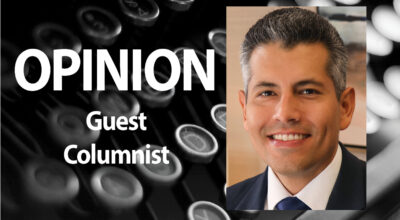On dreams of “Iron Horses”
Published 9:04 am Monday, August 15, 2016
Commentary by Dr. Don Newbury
Perhaps dream-sizing today of century-old happenings should be linked to individuals with king-size visions of what can be. We can’t get our minds wrapped around ideas of such dreamers whose unbounded optimism and rolled-up sleeves led to projects of grandeur.
Before automobiles, before area oil discovery, and a full century before wind turbines turned lazily in the west Texas winds, cotton and cattle undergirded the economy. Visionaries came up with $200,000 in 1906 to birth a railroad. It was a short line, to be sure, but not to be short-lived.
Roscoe, Snyder and Pacific made for an ambitious name. Early dreams were to lay rails for 200 miles, connecting the RS&P to main lines in northwest Texas that stretched to the Pacific. They made it 40 miles, ending at Fluvanna, a hop/skip/jump west of Snyder.
No doubt, tobacco was spat toward the dreamers. Some critics shook their fists, shouting, “Get a horse!” Excitement prevailed, though, particularly among sweaty workers laying rails for 15 cents per hour during hardscrabble years two decades before the Great Depression.
They said the rails were “quarter-spiked and half-tied.” Stated differently, they got by with one-fourth of the spikes and half the cross ties recommended.
True enough, the little railroad was established with more faith than funds. It was “baling-wired;” duct tape–not yet invented–would have helped a bunch. It should be noted, though, the line had just one serious wreck during its 75+ years, and it had no fatalities.
The first locomotive–purchased used, of course–had been a wood-burner before conversion to coal. The RS&P began daily passenger and freight service on May 22, 1908–less than two years after its charter was granted.
It was the biggest of deals; finally, Snyder was connected by rail to cities back east. They had a two-day celebration, this town of 3,000 people. The excitement attracted 10,000 visitors, according to the Dallas Morning News. Schedules were crowded with picnics, speeches, ball games, hot air ballons, and horseshoe and washer pitching. Bunting flapped in the breeze from businesses, adding to the “hoopla.”
On its return to Roscoe, the train backed its way across the 31-mile span, since there was no provision for turning around–yet.
How giddy those first passengers must have been, experiencing speeds of up to 25 MPH. Citizens were so excited about completion of the first segment, they rode a flat car pulled by mules for a “warm-up” to train-riding.
The “Pacific” part of the name, however, was not to be. RS&P ran with the big dogs on a prairie dog budget until deregulation in 1980 led to closure of the rail line in 1983.
Still, folks who believed in the RS&P–up to and including investing–held heads high, as well they should have. The rail line showed modest profits most years. Bankruptcy was never once declared, and it operated through years of the Great Depression and two World Wars, providing employment for up to 70 persons. Noteworthy, too, is that when rails between Snyder and Fluvanna were taken up in 1941, they went straight to foundries, later to be used as shrapnel in World War II. Today, there’s only 1.5 miles of rail remaining. It is used by Eagle Railcar Repair Company.
The internet has many accounts of the RS&P, and the Roscoe Historical Museum–open upon request and on “special days”–has even more. Sometime when you’re in Roscoe, the museum is a great stopping place, particularly if children in the back seat are reading The Little Engine That Could.
Dr. Edwin Duncan, a native who returned a decade ago after a long stint of university teaching in the northeast, is eager to show off the museum when he’s not “out of pocket.” Folks at the city hall–and others– have the number of the cell phone “in his pocket.”
He’s understandably proud of his hometown, its heritage, and, of course, the RS&P. One of his blogs will be revisited soon. It concerns a “jackrabbit round-up in Roscoe.” For now, though, he’ll tell you much more about the little railroad that could–and did.
Dr. Newbury is a speaker in the Dallas/Fort Worth Metroplex. Inquiries/comments to: newbury@speakerdoc.com. Phone: 817-447-3872. Web site: www.speakerdoc.com. Columns archived at venturegalleries.com, newbury blog.





